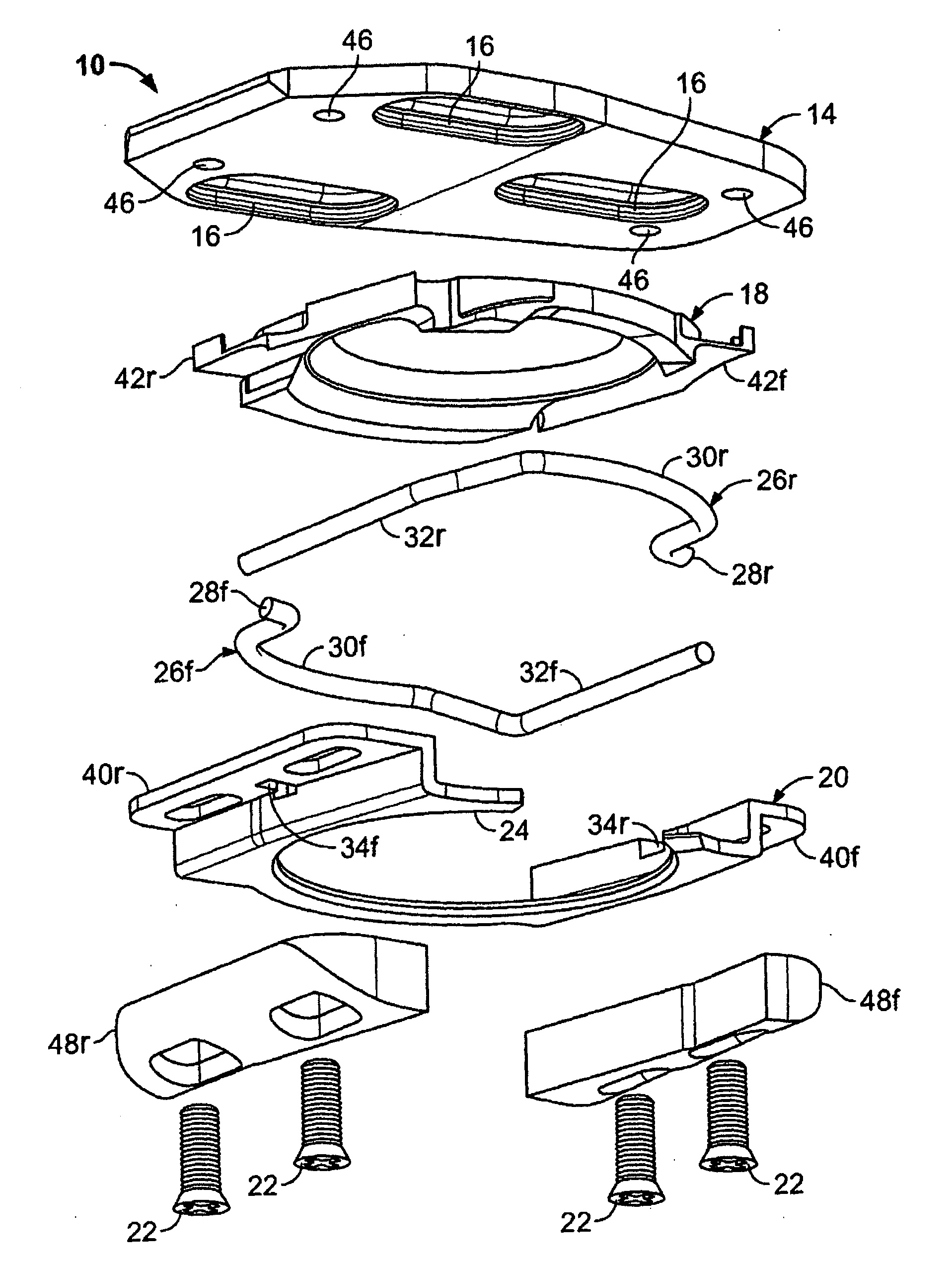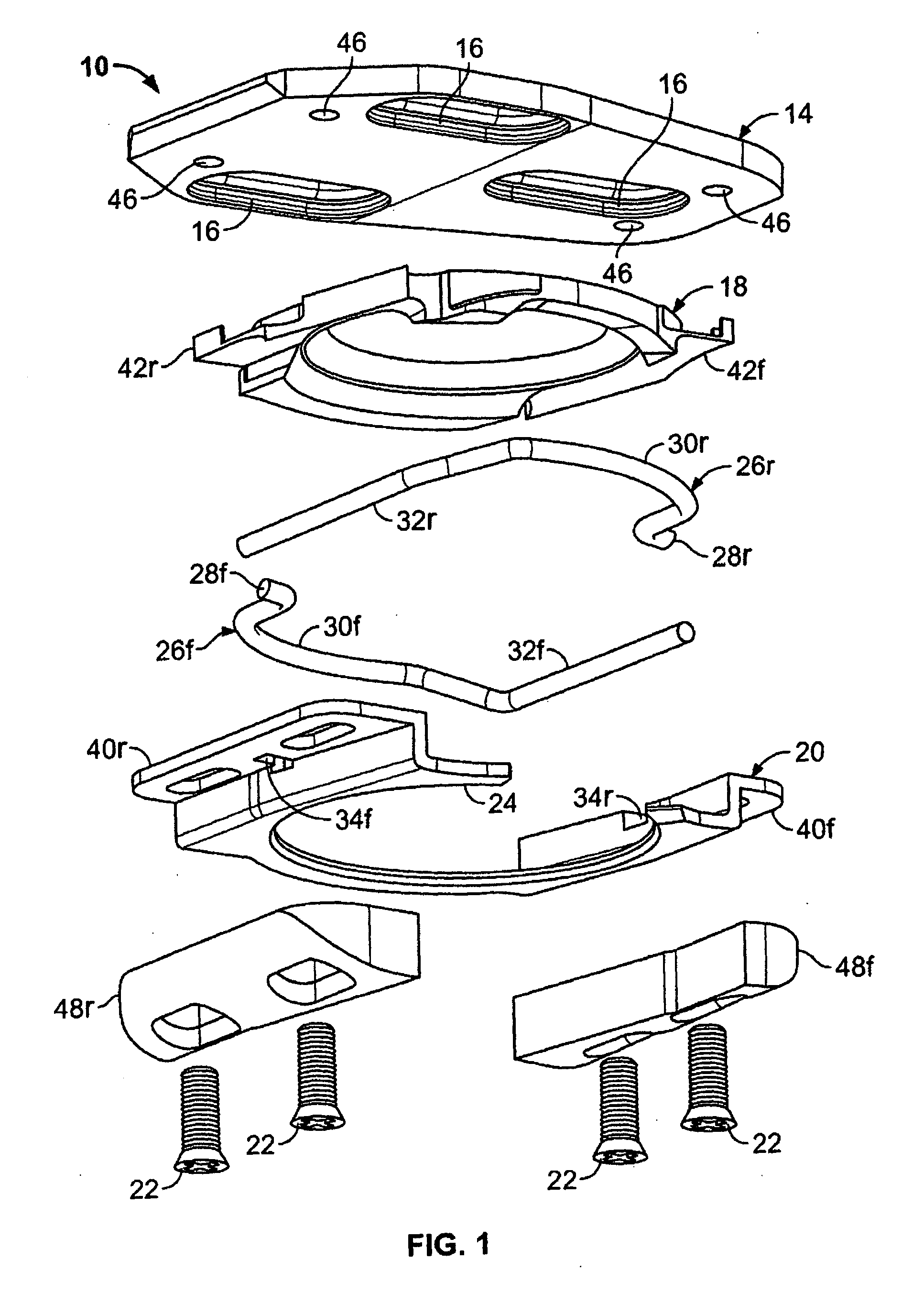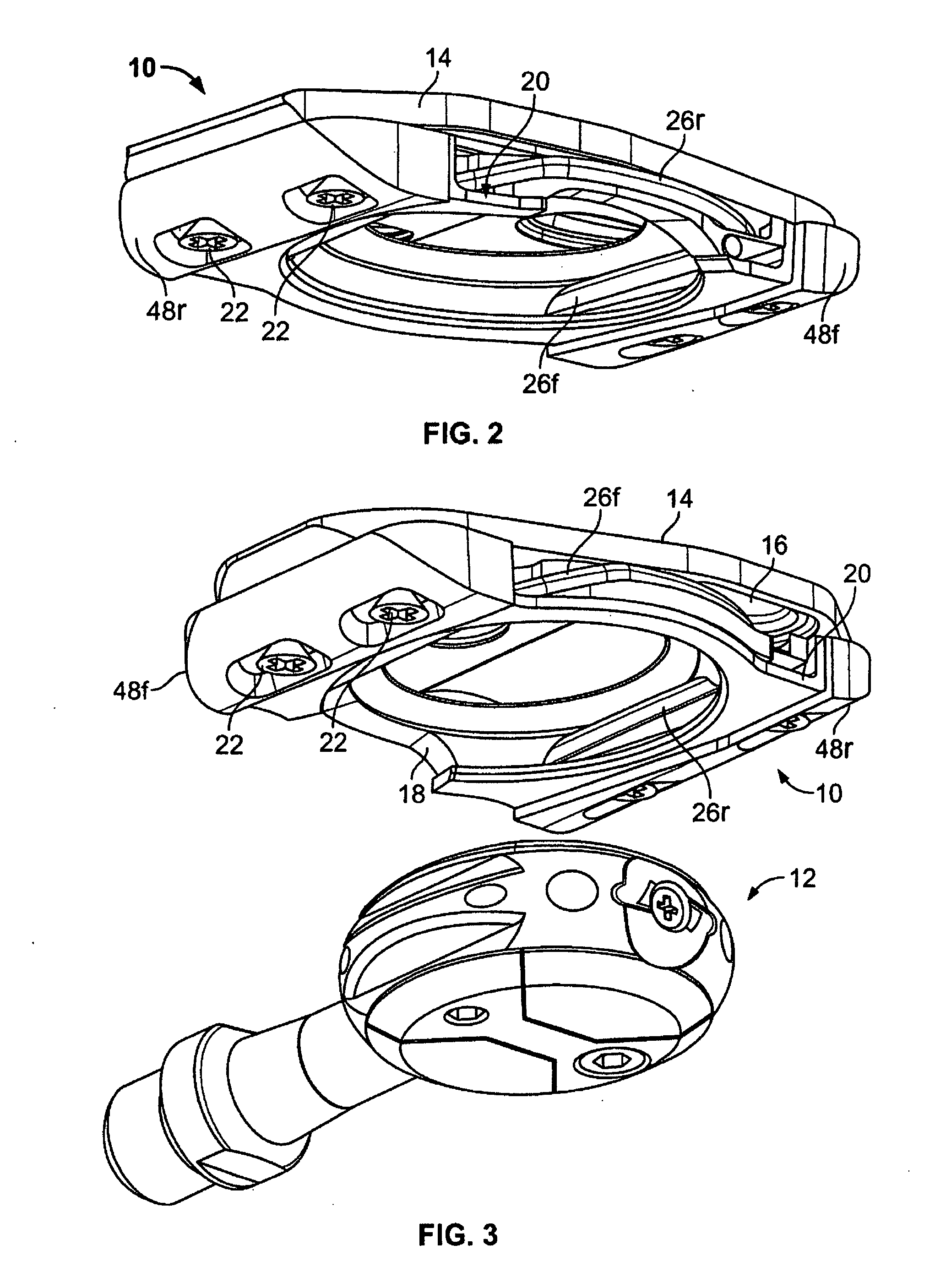Cleat assembly for clipless pedal
- Summary
- Abstract
- Description
- Claims
- Application Information
AI Technical Summary
Benefits of technology
Problems solved by technology
Method used
Image
Examples
Embodiment Construction
[0044]With reference now to the illustrative drawings, and particularly to FIGS. 1-4, there is shown a first embodiment of a cleat assembly 10 in accordance with the invention, configured for attachment to the sole of a user's shoe (not shown) and for releasable securement to a bicycle pedal 12 (FIGS. 3 and 4). The particular cleat assembly depicted is configured for attachment to the user's left shoe, but it will be appreciated that a similar cleat assembly could be oppositely configured for attachment to the user's right shoe. The cleat assembly includes a plastic base plate 14 configured to be secured to the shoe's sole (not shown) by screws (not shown) extending through three elongated openings 16, and it further includes a plastic spring housing 18 and a steel bottom plate 20 configured to be secured, together, by four screws 22 to the plastic base plate 14. The spring housing 18 and bottom plate 20, together, define a circular central opening 24 sized and shaped to conformably...
PUM
 Login to View More
Login to View More Abstract
Description
Claims
Application Information
 Login to View More
Login to View More - R&D
- Intellectual Property
- Life Sciences
- Materials
- Tech Scout
- Unparalleled Data Quality
- Higher Quality Content
- 60% Fewer Hallucinations
Browse by: Latest US Patents, China's latest patents, Technical Efficacy Thesaurus, Application Domain, Technology Topic, Popular Technical Reports.
© 2025 PatSnap. All rights reserved.Legal|Privacy policy|Modern Slavery Act Transparency Statement|Sitemap|About US| Contact US: help@patsnap.com



